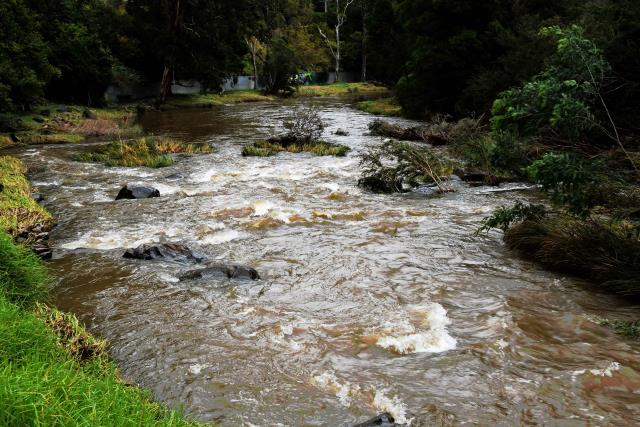
By Callum Ludwig
Melbourne Water is advising a halt to the acceptance of any desalinated water ordered by the Victorian Government as Victoria enters the third straight summer of predicted La Niña events.
The state’s water storage is over 94 per cent as of 27 September.
This is the first time in 25 years it’s been near capacity and is positive news for Melbourne’s water security and the environment ahead of spring and summer.
Melbourne Water’s Acting Managing Director Gavan O’Neill said because of high storage levels, if required, rainfall in Melbourne Water’s supply catchments in the Yarra Ranges can be released as additional flows from the Thomson Dam into the Thomson and Yarra rivers.
“At certain rates, these managed flows can provide environmental and recreational benefits. The Thomson Dam does not receive any water from the desalination plant and is nearing capacity because of the significant amount of rain it has received,” he said.
“Without regular desalination orders, storages will not be able to meet Melbourne’s water demands under most conditions. Demand from rainfall-dependent sources is already outstripping supply – so there is a reliance on desalinated water to fill this gap and to keep storages topped up. ”
Minister for Water and Eastern Victoria MP Harriet Shing accepted the advice on 23 September and the desalination order was immediately halted.
To date, the Victorian Desalination Plant had delivered 3.4 gigalitres (GL) of this year’s 15 GL order – 110 GL lower than last year’s order.
Ms Shing said the desalination plant is a critical part of our long-term water supply.
“We keep our water storages as high as possible to protect water security not only for today, but for generations to come,” she said.
“We are acting on the best advice about our resource position – adapting to the very rare event of three successive La Niña events.”
Melbourne retail water corporations including Yarra Valley Water will ensure households only pay for the water which has already been delivered, and families can expect their next bills to be slightly lower with desalination costs removed.
Mr O’Neill said 15 GL would have supplied about 3 per cent of Greater Melbourne’s annual water use, which represents about 1 per cent of the volume currently stored in Melbourne’s water supply system.
“Greater Melbourne’s water levels are in the best shape they have been in 25 years because of a combination of above-average rainfall and the use of the Victorian Desalination Plant since 2017. However, while our storages are high, if conditions turn dry, which we know can happen very quickly, levels can drop swiftly,” he said.
“In a severe drought, storage levels can drop by 20% in just 12 months, so having storage levels high creates a much-needed buffer. Without water contributions from the desalination plant since 2016/17, Melbourne’s storage levels would be 25% lower than they are now. On September 13 the Bureau of Meteorology (BoM) issued a forecast that shows Melbourne will experience wetter La Nina weather patterns for a third consecutive year.”
The storage levels are around 65 per cent higher than the lowest levels experienced in June 2009 at the end of the Millennium Drought when levels were just 25.6 per cent.
Mr O’Neill said with both BoM and CSIRO projections pointing to long-term trends of less rainfall, less run-off into rivers and storages and more severe and prolonged droughts, it is beneficial to keep dams and reservoirs as full as possible.
“This is just the fourth time since records began in 1900 there have been three La Nina years in a row, so it is very unusual, but beneficial for Greater Melbourne’s drinking water reservoirs and catchments,” he said.
“Despite the past few years of wet weather, Melbourne has experienced below long-term average inflows into water storages in 16 of the past 20 years and our population has grown 20 pre cent since 2007.”






